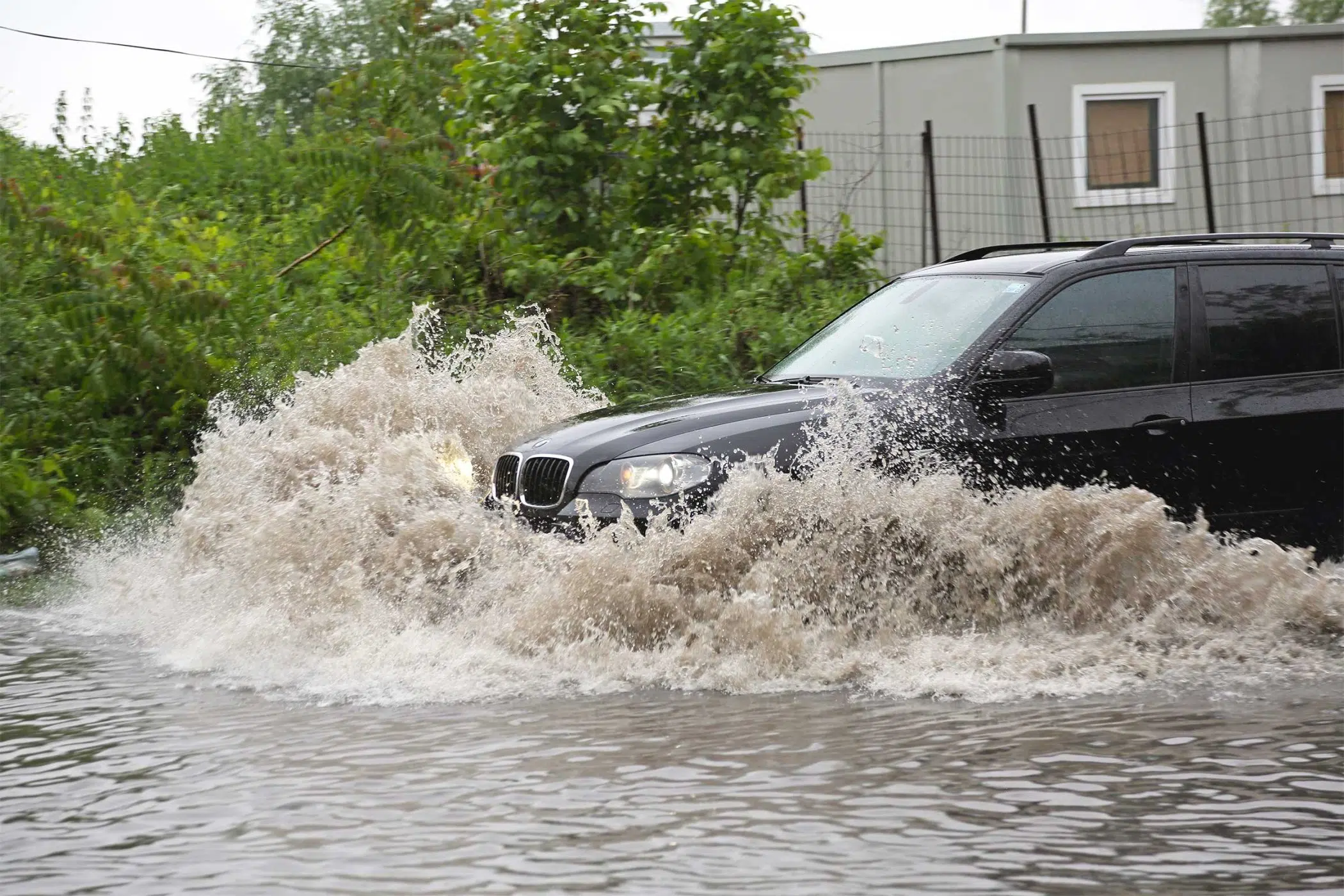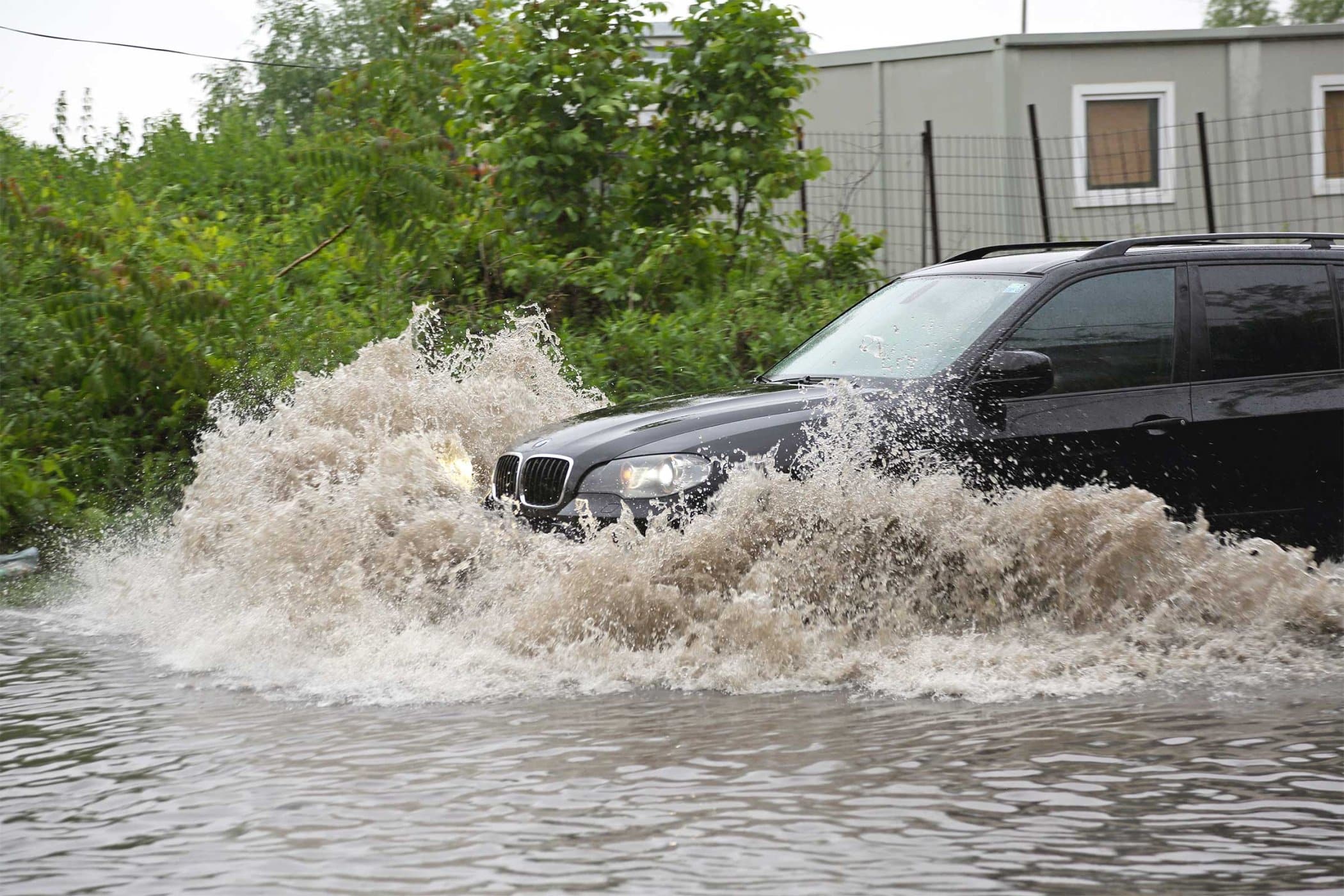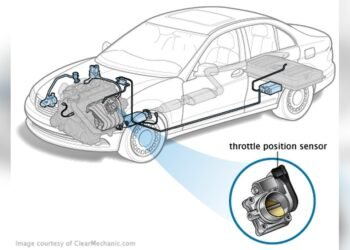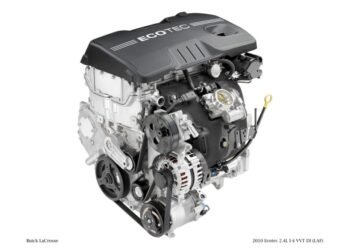Your car may not start after driving through water due to hydrolock or electrical system damage. Water intrusion can cause immediate engine or component failures.
Driving through water can be risky for any vehicle. If water reaches critical components under the hood, it can lead to severe issues. A car’s engine, when exposed to excessive water, risks hydrolock, where water enters the engine cylinders, preventing the pistons from moving.
Electrical systems are also vulnerable; water can short-circuit wiring and damage electronic control units. This sudden malfunction can leave drivers stranded with a car that won’t start, necessitating professional repairs. Ensuring your car is well-maintained and avoiding waterlogged roads can help prevent such occurrences. Always assess the depth of water before attempting to drive through it, as the consequences can be both immediate and costly.
The Perils Of Waterlogged Roads
The Perils of Waterlogged Roads present unique challenges for drivers. Water can hide dips, potholes, and other road dangers. Driving through water can lead to serious car troubles, including a car that won’t start. Understanding these risks is crucial for any driver.
Common Causes Of Water Damage To Cars
- Hydrolocking: Water enters the engine and halts its movement.
- Electrical system failure: Water causes short circuits.
- Contaminated fluids: Water mixes with oil and other fluids.
- Corrosion: Water leads to rust and component decay.
Immediate Risks Of Ignoring Water Hazards
Ignoring water hazards can lead to immediate and costly damage. Act quickly to prevent long-term issues.
| Immediate Risk | Consequence |
|---|---|
| Engine Damage | May require a complete engine overhaul. |
| Brake Failure | Limits the ability to stop, risking safety. |
| Loss of Control | Increases the risk of accidents. |

Credit: boggsautomotive.com
Initial Assessment Post-soak
Driving through water can leave your car silent and still. This section talks about what to do right after your car gets soaked. It’s called the Initial Assessment Post-Soak.
Safety First: Before You Attempt To Start The Car
Before you try anything, think safety. Here are steps to keep you safe:
- Check the area. Make sure it’s safe.
- Do not start the car. This can cause more damage.
- Disconnect the battery. This prevents electrical issues.
- Look for visible damage. See if water reached important car parts.
Evaluating The Water Level Exposure
Understanding how much water your car faced is key. Here’s how to evaluate:
- Inspect for water lines. This shows how high water went.
- Check the engine. Water here means big trouble.
- Look inside. Water inside can ruin electronics and more.
Use this table to understand potential impacts:
| Water Level | Potential Impact |
|---|---|
| Low | Minor, possibly only cosmetic damage |
| Medium | Electrical and mechanical parts may be affected |
| High | Major damage, risk to engine and electronics |
After evaluating, contact a professional. They can help fix your car safely.
Diagnosing The No-start Problem
Imagine driving through a deep puddle. Next thing you know, your car won’t start. Diagnosing this no-start problem can be tricky. Let’s dive into common issues that could be causing your car troubles.
Electrical Systems And Water: A Troublesome Mix
Water and electricity are a bad combination, especially for cars. When your car dips into water, electrical components can get wet. This leads to short circuits or corrosion. Both can stop your car from starting.
- Check the battery: Corrosion can prevent power flow.
- Inspect wires: Look for wet wires or blown fuses.
Air Intake And Engine Compression Concerns
Your engine needs air to start. If water enters the air intake, it can reach the engine. This is called hydrolocking. It can cause serious engine damage and stop your car from starting.
- Listen for odd noises: A hydrolocked engine may make strange sounds.
- Check air intake: Make sure it’s dry and clear of debris.

Credit: www.youtube.com
Quick Fixes To Try On The Spot
Driving through water can lead to a non-starting car. It’s stressful. You might fix it on the spot. Here are quick fixes to try.
Removing Water From The Engine
Water in the engine is serious. Act fast to reduce damage.
- Turn off the engine immediately.
- Do not try to start the car again.
- Remove the air filter and inspect for wetness.
- If wet, replace with a dry one.
- Use a rag to soak up water in the air intake.
This may prevent engine hydrolock. If unsure, seek professional help.
Drying Out Electrical Components
Electrical issues often cause starting problems after water exposure.
- Open the hood to air out the engine bay.
- Check the battery and connections for moisture.
- Dry off wet parts with a clean cloth.
- Leave the car to dry for a while.
Focus on spark plugs and wires. Dry them carefully. This may resolve the issue.
Tackling Hydrolock: A Step-by-step Guide
Driving through water can sometimes lead to a big problem called hydrolock. This happens when water gets into your car’s engine. It can stop your car from starting. Let’s learn how to fix this issue step by step.
Identifying Hydrolock Symptoms
First, we need to know if your car has hydrolock. Here are some signs:
- The engine does not start.
- You hear a strange sound when trying to start the engine.
- The engine starts but then quickly stops.
If you notice these signs, your car might have hydrolock.
Manual Intervention To Clear Water
Next, let’s try to remove the water from the engine. Follow these steps:
- Turn off the car immediately to prevent more damage.
- Remove the spark plugs carefully. This helps to dry out the engine.
- Use a hand to crank the engine. This pushes out the water.
- Let the engine dry completely.
- Put the spark plugs back and try to start the car.
These steps can help fix the hydrolock problem. Your car might start again!

Credit: boggsautomotive.com
When To Call For Professional Help
Driving through water can lead to serious car troubles. If your car won’t start after such an ordeal, it might be time to seek professional help. Not all issues are DIY-friendly. Recognizing when expert intervention is needed can save you time and prevent further damage to your vehicle.
Assessing When Diy Won’t Cut It
Some car problems require a skilled hand. Here are signs that DIY won’t suffice:
- Electrical issues: Complex and risky for novices
- Engine damage: Special tools and expertise needed
- Unknown problems: Diagnosis often requires advanced tech
Finding A Reliable Mechanic
Selecting the right mechanic is crucial. Use these tips:
- Seek recommendations from trusted sources
- Check online reviews and ratings
- Ensure mechanics have the right certifications
- Look for a warranty on repairs
Preventive Measures For Future
No one likes when their car stops after a splash through water. It’s a headache. But, good news! You can avoid this. Let’s dive into some tips that can save you from future troubles.
Waterproofing Your Vehicle
Protect your car from water harm. Keep your ride safe and dry. Follow these steps:
- Seal openings: Use sealants on doors and windows.
- Check drains: Ensure sunroof and window drains are clear.
- Protect electrics: Apply dielectric grease on electrical connections.
- Inspect undercarriage: Apply anti-rust spray to prevent corrosion.
Driving Tips To Avoid Water Damage
Stuck in a wet situation? These driving tips can help:
- Know your route: Avoid roads prone to flooding.
- Slow and steady: Drive slow to prevent engine flooding.
- Watch for depth: Avoid water if it looks deep.
- Follow the leader: Let other vehicles go first to gauge water level.
Navigating Insurance And Warranty Claims
Experiencing car trouble after a water incident can be stressful. Your vehicle won’t start and you’re left wondering about the next steps. Proper guidance through insurance and warranty claims can turn the tide. Let’s dive into understanding your coverage and simplifying the claim process.
Understanding Your Coverage
Know what your policy includes before disaster strikes. Flood damage may fall under comprehensive coverage. Review your insurance documents. Check for details on water-related incidents. Warranty terms vary. Standard warranties might not cover water damage. Extended warranties could offer better protection.
Document evidence immediately. Take photos and videos of the damage. This helps with claim substantiation. Keep all repair receipts. They prove the cost incurred.
Reach out to your insurance agent. They can clarify coverage specifics. The agent can also advise on the claims process. Contact the car manufacturer for warranty queries. Confirm what is covered under your car’s warranty.
The Claim Process Simplified
- Report the incident to your insurance company as soon as possible.
- Fill out a claim form. Provide all necessary details and documentation.
- Assessment follows. An adjuster will evaluate the car’s condition.
- Approval or rejection of the claim will be communicated.
- Receive compensation or a detailed explanation if denied.
Keep communication lines open with your insurer. Respond to their inquiries promptly. This ensures a smoother claims process. Understand your policy’s deductibles. They affect the out-of-pocket costs.
Seek professional repairs. Choose a reputable mechanic or service center. Quality repairs can prevent future issues.
Follow up regularly. Stay informed about your claim’s status. Persistency can expedite the process.
Frequently Asked Questions
Why Won’t My Car Start After A Flood?
Driving through water can cause your vehicle’s electrical components to short-circuit or engine hydrolock, preventing it from starting.
Can Water Damage Cause Starting Issues?
Yes, water can infiltrate fuel, electrical, and air systems, leading to difficulty in starting the car or causing engine misfires.
How To Fix A Water-flooded Engine?
Remove the spark plugs, crank the engine to expel water, and dry out the components before attempting a restart.
What Immediate Steps Should I Take?
Turn off the engine immediately to avoid further damage, and don’t attempt to restart the car. Seek professional mechanical assistance.
Will My Insurance Cover Water Damage?
Comprehensive car insurance policies typically cover water damage, but check your individual policy terms for confirmation.
Conclusion
Navigating through water can be tricky for any vehicle. If your car refuses to start after such an ordeal, it’s essential to assess and address the problem promptly. Remember, quick action can prevent more severe damage. Seek professional help to ensure your car gets back on the road safely and efficiently.
Always prioritize safety and maintenance to avoid future issues.















